Library is an organized collection of data possessions made available to a distinct community for reference or borrowing. It offers digital and physical access to material, and maybe physical structure or room, or a virtual place, or both.Libraries are free. They have so many things there: books, CDs, movies, TV shows, and all of them you can borrow for free. When I go to a library, I ring with the awareness that I can take out up to 50 items without spending a single penny. There’s no guilty feeling like a bookstore, because I’m not dropping any money on this things. This may not appear like a problem, but believe me, when heading home with an armful of books you can hardly carry, and then come back home to the mount of books from your aforementioned library trip, this turn out to be a problem. There’s no way I could read all of these before they are due back. Oh, and further cool stuff that libraries do? They have author official visit. So you can see the real person who carved the book you read.
We figured, since you are here reading this, you might want to know the top 10 largest libraries ever built in the world. Weknow you’re busy,sowe summedup theTop 10 largest libraries in the world.
1. Library of Congress

The de facto national library of the United States of America is the Library of Congress. It is the oldest federal institution in the United States. Situated in four structures in Washington, D.C. and was established for Congress in 1880. For most of the 19th century, the Library of Congress was housed in the United States Capitol. Even though it is open to the public, only Library personnel, Members of Congress, Supreme Court justices and other high position government officials may look into the books. As the de facto national library, the Library of Congress upholds American literature and literacy.
2. British Library
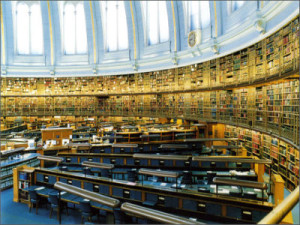
As a result of the British Library Act 1972, The British Library was created on the 1st of July 1973. The United Kingdom’s National Library is a major research library. It holds 150 million items in many languages, from numerous countries and in many formats. The British Library obtains all books produced in the United Kingdom and Ireland, including a substantial quantity of foreign titles distributed in the UK since it is the legal deposit library. The library was initially a department of the British Museum and from the mid-19th century the famous spherical British Museum Reading Room. It became officially detached in 1973, and by 1997 had relocated into its new structure at St. Pancras, London.
3. New York Public Library

The library has a renowned spot which is the Rose Main Reading Room or Room 315. It is a majestic 78 feet wide and 297 feet long with grand chandeliers and furnished with well-made table, comfy chairs and brass light lamps. It is also equipped with computers. In 1965, it was declared as a National Historic Landmark. In the three eras before 2007, the structure’s interior was progressively renovated. The Princess Firyal Lionel Pincus and Princess Firyal Map Division slot, with splendidly carved wood, marble, and metalwork was restored in December 2005.
4. Russian State Library
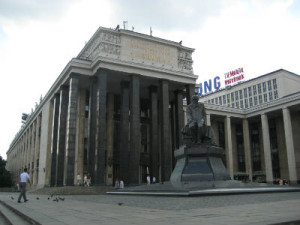
Russian State Library located in Moscow which was established in 1862. It procured over 140 years of everyday exertion and devotion of numerous of staff to become what they are now — the renowned ‘Leninka’. Today, the Library encompasses an exceptional collection of Russian and foreign data in 247 languages, providing over 43 million library items. It is also prominent for its specialized collections of maps, newspapers, magazines and sheet music, audio records, rarities, and other stock categories. Enthused by its history and assisted with today’s potential, the Library is developing into the future along the four strategic directions: Going public, academic, digital and international.
5. National Library of Russia
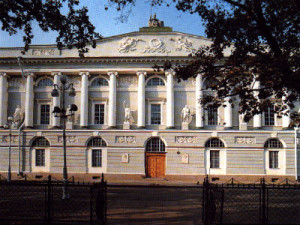
National Library of Russia is located at St. Petersburg, Russia. It is commonly known as the Imperial Public Library from 1795 up to 1917, Russian Public Library from 1917 up to 1925, and State Public Library from 1925 up to 1992. It is the oldest public library in the county of Russia as well as the first national library in the nation. It is also included in the World’s Largest Libraries. National Library of Russia holds the 2nd richest collection in Russian Federation which is a treasury of national heritage and All-Russian Information, Research and Cultural Center. It must not be mixed up with the Russian state Library situated in Moscow.
6. National Diet Library

The only national library in Japan is The National Diet Library. It was established on 1948 to help the members of the Diet of Japan and National Diet Japan in researching matters of public policy. Similar to the purpose of the America’s Library of Congress. The library is consisting of 2 main facilities: Tokyo and Kyoto, and few more other branch libraries all though Japan. As Japan’s national library, the National Diet Library gathers copies of all publications printed in Japan. Furthermore, because the library serves as a study library for Diet participants, their staffs, and the general community, it preserves a broad collection of resources published in overseas languages on extensive topics.
7. National Library of China

The largest library in Asia and one of the largest libraries in the world is known as the National Library of China. It has an overall 26.3 million collections by 2007. The foreshadowing of the National Library of China is the Metropolitan Library which was established on the 24th of July in 1909. It was founded by the Qing government. The National Library of China was officially opened to the public in 1912 after the Xinhai Revolution. Its name was changed to National Beijing Library in 1928 and later change to National Library. It inherited its archive and books from the Imperial Wenyuange Library.
8. Bibliothèque nationale de France
The National library of France which is situated in Paris is Bibliothèque nationale de France. It is anticipated to be the source of all that is published in France. The library holds about 5,000 Greek manuscripts, which are distributed into three fonds: fonds Coislin, Fonds du Supplémentgrec., and Ancienfondsgrec. The digital library which is called as Gallica was recognized in 1997. As of January 2012, it made available on the web about 1.6 million documents, 320 thousand books, 36 thousand maps, 19, 462 manuscripts, 410 thousand images, 830 thousand newspapers as well as magazines, and 7 thousand sheets of music.
9. Royal Danish Library
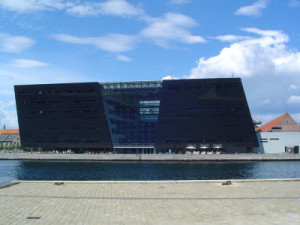
Situated in Copenhagen, Denmark, Royal Danish Library is a national library of Denmark. It is also the University of Copenhagen’s university library. Royal Danish Library is the largest library in the Nordic nations. It is said to contain an abundant historical treasures. It was founded by King Frederik III in 1648. It was open for the public in 1793 and merged with the prominent University Library (founded in 1481) on 1989. In the year of 2005 it was combined with the Danish National Library for Science and Medicine. As of January 1, 2006, the official name of the organization is The Royal Library, the National Library of Denmark and Copenhagen University Library. However, the royal library was merged with Danish Folklore archive in 2008.
10. Library of the Russian Academy of Sciences
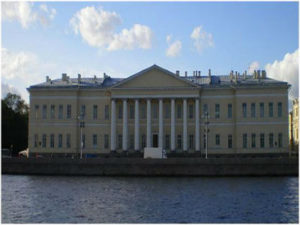
Library of the Russian Academy of Sciences is situated in Saint Petersburg, Vasilievsky, Russia. It is a state-owned Russian library. It was founded in 1714 by a decree of Peter I in Saint Petersburg. It was then incorporated into the building of the St. Petersburg Academy of Sciences. In 1728 up to 1924, its collections were kept in the structure of Kunstkamera, with which it had molded a single academic foundation until 1803. In the 1920s the library received many stuffs seized during nationalization in Soviet Russia. In 1924 up to 1925 the collections were moved to the new structure built for the library in 1914.During the barricade of Leningrad in 1941 up to 1944, the collections remained in the besieged city and the library was open. On February 15, 1988, the library grieved the most disastrous fire in its history which destroyed an extensive portion of the collections.



